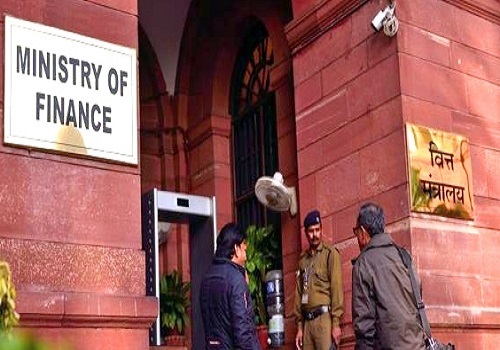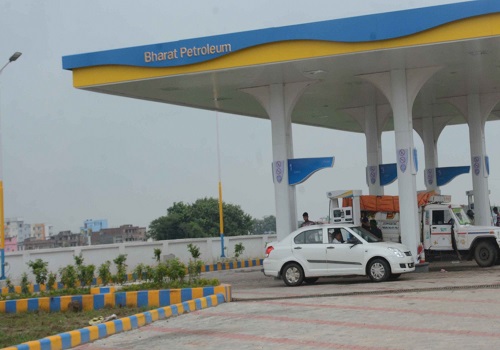Stagflation worries, downgrades in stock market weightage cloud India's growth story

Follow us Now on Telegram ! Get daily 10 - 12 important updates on Business, Finance and Investment. Join our Telegram Channel
India is facing downgrades in stock market weightages and in GDP with stagflation risks being flagged due to the ongoing war in Ukraine.
Stagflation is characterised by slow economic growth and relatively high unemployment -- or economic stagnation.
Credit Suisse has announced a tactical downgrade of India from Overweight to Underweight. Higher oil prices hurt the current account, add to inflationary pressures and increase sensitivity to Fed rate hikes. If Brent crude remains at $120/bbl, India's current account would weaken by almost 3 pp of GDP. The market's big P/E premium magnifies the risks.
It raised China and Australia from Market Weight to Overweight. Key assumptions underpinning the adjusted weightings including oil could stay higher for longer than originally anticipated, before the West froze Russia's FX reserves, Credit Suisse said.
"The Fed could hike more slowly than previously anticipated, but the terminal points for the end of this year and 2023 will likely not change much. We still feel that markets underestimate the depth of inflationary pressures and how much the Fed needs to hike," it said.
Oil is the main concern driving Credit Suisse's cut of India to Underweight. Even before Ukraine, higher oil prices had seriously dented the trade balance, pushing the deficit down from $41bn in CY1Q21 to $61bn in 4Q.
Credit Suisse India strategist Neelkanth Mishra calculates that Brent crude at $120/bbl could add $60 billion to India's import bill. Price rises for gas, coal, edible oils and fertilisers could add another $35 billion. In total, the current account could fall by close to 3 per cent of GDP.
If oil stays above $120, the hit would be bigger.
Another old bugbear -- inflation -- also becomes more worrisome with higher oil prices. Over the past year, headline inflation has risen to levels not seen since 2014. Mishra calculates that if Brent stays above $120/bbl for a year, it could add 100 bp+ to inflation and subtract 2.5-3 pp from GDP.
Morgan Stanley has lowered India GDP's growth estimate by 50bps to 7.9 per cent. It has raised CPI inflation forecast to 6 per cent. It expects the current account deficit to widen to a 10- year high of 3 per cent of GDP in F2023.
The key channel of impact for the economy will be higher cost-push inflation, feeding into broader price pressures, which will weigh on all economic agents, i.e., households, business, and government, Morgan Stanley said.
Morgan Stanley said that the ongoing geopolitical tensions exacerbate external risks and impart a stagflationary impulse to the Indian economy.
India is affected through three key channels: 1) Higher prices for oil and other commodities; 2) Trade; 3) Tighter financial conditions, influencing business/investment sentiment.
Morgan Stanely now expects the April RBI policy to mark the process of policy normalisation with a reverse repo rate hike.
"We see less room for fiscal policy stimulus to support growth given high deficit and debt levels. We see a possibility of a modest fuel tax cut and reliance on the national rural employment program as an automatic stabiliser," Morgan Stanley said.
Russia's invasion of Ukraine, and the flurry of punitive sanctions imposed on the former by the US and Europe, can impact India Inc. due to the resultant spike in commodity prices.
If these prices are not passed on, it can increase input costs and squeeze the margins of downstream sectors.
Also, trade and banking sanctions can cull India's export-import activity in the affected region till workarounds are found, Crisil said.
On the other hand, a few sectors such as steel and aluminium may benefit from rising prices.
The price of Brent crude has skyrocketed from $97/bbl before the Russian invasion began. Without a commensurate increase in retail fuel prices, oil marketing companies are already making losses.
The impact of this is also being felt by sectors such as chemicals and paints, which use crude oil-linked derivatives as their primary feedstock. These sectors may see some margin squeeze that could extend well into the first quarter of the next fiscal, as inventories bought previously at lower prices run out, Crisil said.
Other commodities will also see further cost inflation. Steel and aluminium (Russia contributes 6 per cent of global primary aluminium production) prices, which had shot up in recent times from their already-high levels, will have an upward bias, it added.
While this would benefit domestic primary steel makers and aluminum smelters because their realisations will rise, it would cascade negatively for the construction, real estate, and automobile sectors.
Spot prices of natural gas, which are also linked to crude, could continue to climb. But this won't impact the downstream sectors as much. Urea makers, which use it as feedstock, can pass on the higher prices.
But if the war prolongs, domestic availability of urea could become a bother for the farm sector because 8 per cent of the requirement is imported from Russia and Ukraine. Similarly, city gas operators have favourable cost economics versus competing fuels, which could permit them to pass on the gas price inflation downstream -- at least to an extent.
Trade and banking-linked sanctions can also impact sectors sourcing key raw materials such as crude sunflower oil and rough diamonds. Nearly 10 per cent of India's edible oil consumption is sunflower based, of which 90 per cent is imported from Russia and Ukraine.
An extended war could disrupt supplies to domestic oil mills, which typically carry an inventory of 30-45 days and have limited options to change their sourcing at short notice.










Tag News

Monthly Debt Market Update, September 2023: CareEdge Ratings





 320-x-100_uti_gold.jpg" alt="Advertisement">
320-x-100_uti_gold.jpg" alt="Advertisement">








